For the price of some expensive watches you could buy a Ferrari, a Rolls Royce and a beach house, not separately but combined. Watch prices have soared in recent years making some grand complications the ultimate symbol of wealth and prestige.
Obviously, a timepiece that’s encrusted with diamonds will sell for a significantly higher price than those without, but what about those watches that don’t possess any precious gemstones? Why are they selling at such a high price?
Forex Market
One of the most common, yet widely unknown reasons for a markup in watch prices is due to the volatility of the Swiss Franc. Known widely as a reserve currency the Swiss Franc is what most of the big watch manufacturers rely on in order to draw a profit and mitigate their risks.
Near the end of 2011, consumers noticed a fairly substantial markup in the cost of the average Swiss made timepiece. In this particular case, even the low end luxury watches were tagged with higher price tags and the reason was a 25%+ increase which continued to jump throughout most of 2011.
Regardless of whether the manufactures wanted to raise their prices, they were left without much of a choice, since by mid-September the time had come where if they didn’t markup the price, they would begin to take a loss or barely break even in the exchange. In fact, the Swiss Franc moved so extraordinarily fast that the vast majority of Swiss watch companies ended up having to markup the MSRP by 5-10% as they entered the new year.
While the volatility of the foreign exchange market doesn’t substantially affect the highest priced complications, it certainly plays havoc on the under $10,000 price range. Unfortunately for the consumer, prices don’t tend to be lowered once the Swiss Franc rebounds. For the majority of manufacturers, once that MSRP is raised, it will typically stay the same before it increases again.

Commodities
The same goes for the commodities market. For those expensive watches that contain precious metals such as gold, silver and rhodium, or gemstones like diamonds, the price of the manufactured product often sees an increase when the cost of precious metals goes up or the availability of ethically sourced product dwindles. The same can be said for other precious metals that rely on investors to keep it in service. Anytime the cost of the material goes up, so does the price of the watch.
It’s important to remember that any time you purchase a watch with any kind of rare material, in most cases you’re going to pay a lot more for it than you would its more entry-level counterpart.
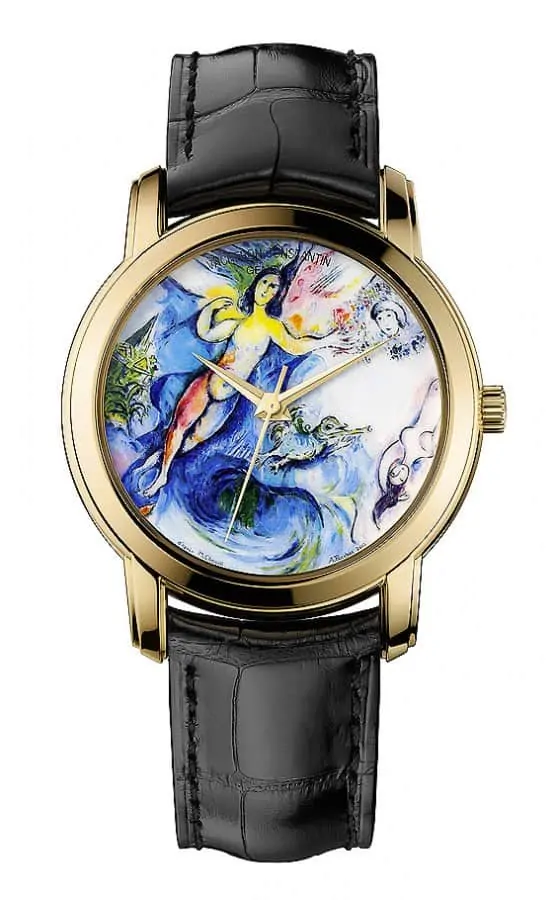
The Luxury Goods Market
One of the primary reasons fine watches are so expensive is simply due to the industry they’re in and the demographics they cater to.
Regardless of actual value, any item introduced as a “luxury” product will gain an automatic increase in price. Regardless of the craftsmanship, materials used or lineage, the same two products can sell at remarkably different price points simply because one is marketed to an elite clientele whereas the other is sold at Walmart and various department stores.
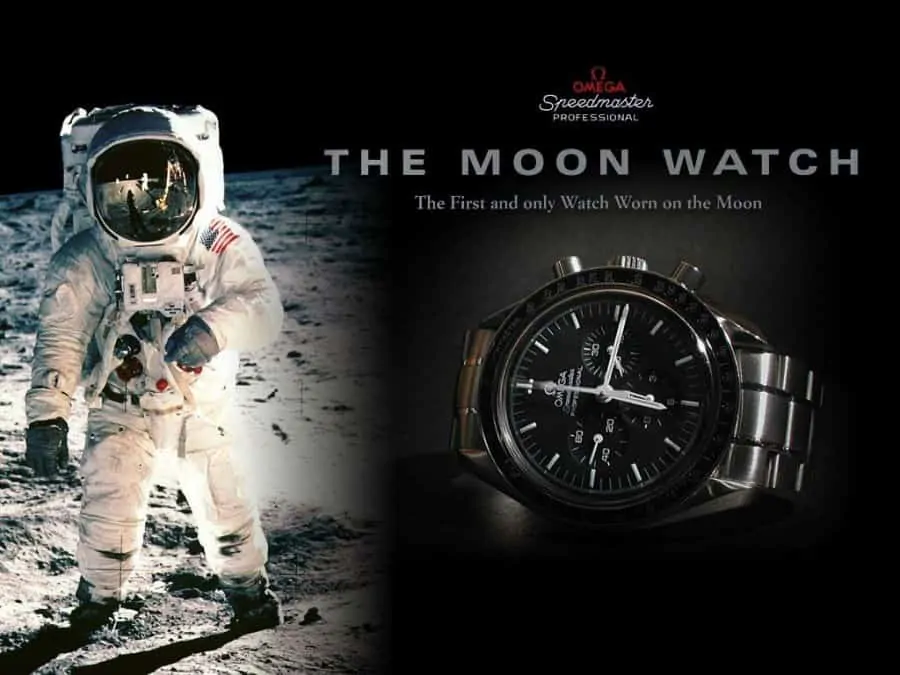
Marketing Campaigns & Gimmicks
When marketing to a high net worth clientele, the standard shotgun advertising approach fails every time. Instead of bombarding consumers via bus benches and billboards, luxury watch manufacturers spend a great deal of money on prime placement and high gloss advertisements in various key markets. In any given issue you can find these ads in magazines like Robb Report and Forbes or websites that cater to a very discerning and wealthy clientele.
From using the top ad agencies, hiring celebrity brand ambassadors to employing the most well known photographers, every detail is taken into consideration to ensure that no ad goes unnoticed and that the manufactures message is told in a clear and concise manner.
When we see these adverts in the glossy magazines, we often fail to remember that in the end the money for this expensive marketing campaign has to come from somewhere. That somewhere is the cost we pay to wear their watches.
From the leather bound packaging it comes in to the photographs you see at jewelry stores, all of these costs are broken up and paid for from each watch sold. While the cost is obviously split up amongst all of the watches in their line, the actual price increase we see can be very low for mass produced watches, to very high for limited edition pieces.
While marketing costs do not significantly impact the sale price of the watch, what it does do is position the watch as an exclusive achievement that becomes a personal statement of the wearer, the same as a Ferrari or Rolls Royce would. Once this tactic is achieved by the marketing campaign, the manufacturer can increase the price drastically without having to justify it.
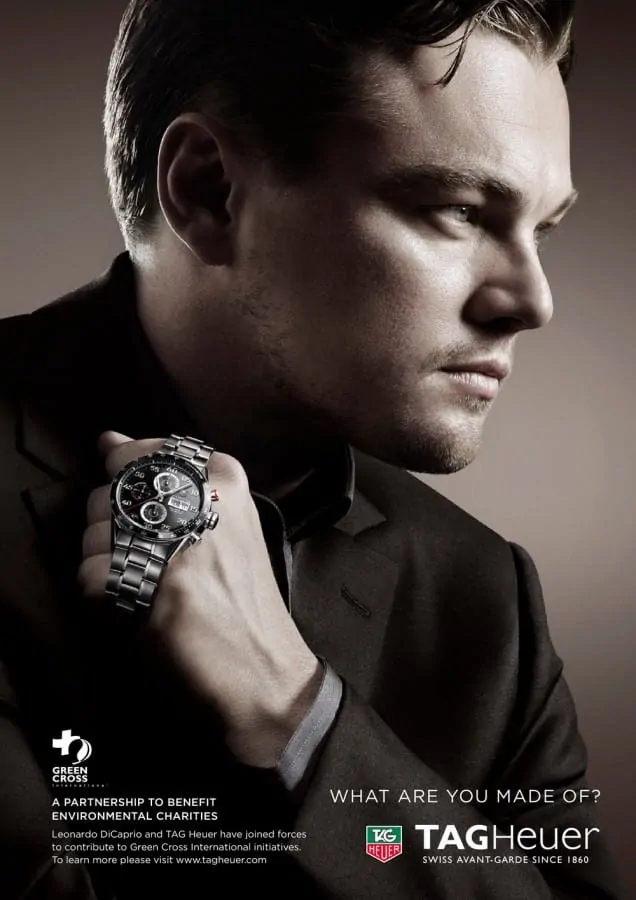
According to Kristen Lynch, a marketing guru with KIK Innovation, “most watch companies determine their market position prior to going to market,” she explains. “So where they position their product in the fashion, trend, technology/engineering or lifetime achievement watch category, will drive not only the price of the watch, but also set the direction for how and where to position and promote their watch, and the relative costs of marketing it to their target audiences”.
“With watches gradually evolving from the old days of being considered a necessity item, to becoming a lifestyle product, or ‘personal statement’ item, the opportunity for watch manufacturers to grow their brand followers and ownership base is even greater,” she claims.
As one of the most influential and creative marketing strategists in North America, Lynch has developed strategic campaigns that move the needle for a diverse range of companies in both the luxury and non-lux markets.
“The costs of marketing in this new and vastly different marketplace are higher than ever,” says Lynch. “For one, you’re not competing only with other watch companies for market share, you’re competing with other handbag, shoes and clothing brands. And whereas before a watch company might have simply made a huge spend on a television campaign during primetime before Christmas, today they’d need to buy premium ads in a broad range of lifestyle vertical publications/websites, they’d also need to create or jump onto existing brand vehicles such as music videos, lifestyle websites, etc. and most critically, would likely also want to pay to place their products through product placement deals with celebrities whose brand image resonates with their ideal target prospects. It’s a much more nuanced, strategic, complex and expensive undertaking to break into the marketplace and gain marketshare,” Lynch says.
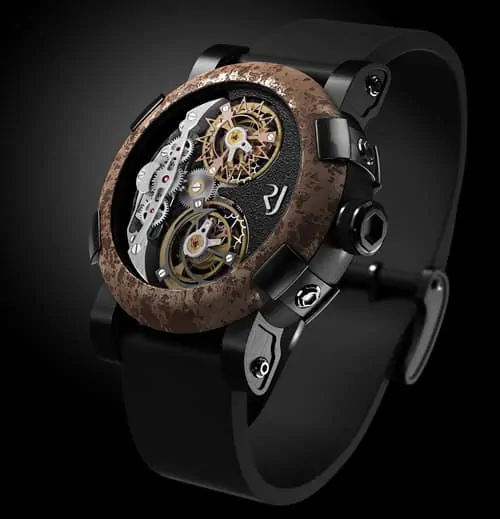
A perfect example of how marketing affects price is the watch that doesn’t tell time. When Swiss watchmaker Romaine Jerome announced their limited edition Day & Night watch priced at $300,000, wealthy men around the world jumped to pick one up. The watch offers no visible time indicators but simply splits time into two readings that display as either “day” or “night”. While this is obviously a useless timepiece unless you live in a cave, what investors saw in it was rarity, exclusivity and prestige since it was a limited offering with a high price tag. Using gimmicks such as two tourbillons (which in my opinion are useless) and steel salvaged from the wreck of the Titanic, the watch was positioned by ad execs like Lynch who understood and realized that the most precious commodity amongst billionaires was “time”. When Reuters interviewed Romaine Jerome’s CEO Yvan Arpa, he explained the philosophy behind the gimmick watch.
“When you ask people what is the ultimate luxury, 80 percent answer ‘time’. Then when you look at other studies, 67 percent don’t look at their watch to tell what time it is,”
he told Reuters. While the watch serves as a personal statement showcasing that while anyone can buy a watch that tells time, only a true connoisseur can afford one that doesn’t, it’s still nothing more than a gimmicky piece of art. Interestingly enough, thanks to a genius marketing campaign, the watch sold out in less then 48 hours after its launch.
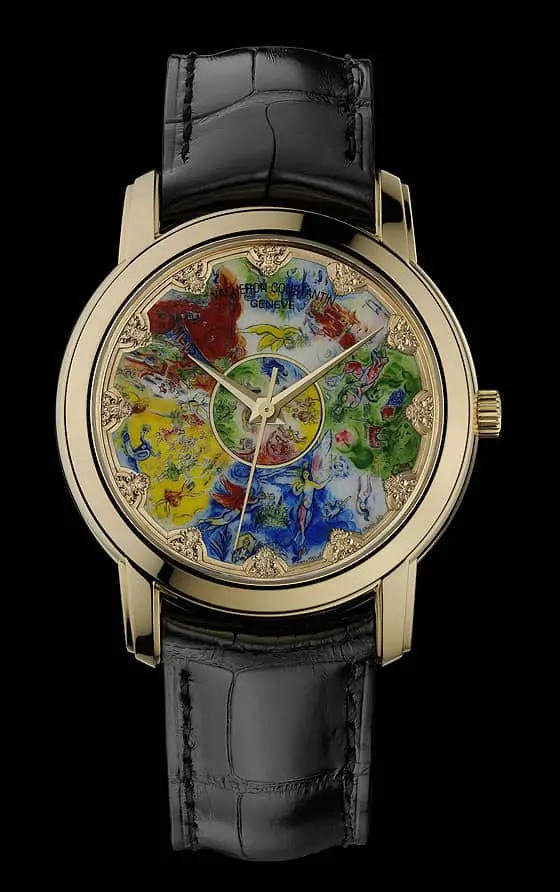
Artistry
For the watch enthusiast, a watch is much more than a wrist-worn item that tells time. If all we cared about was knowing the time, we’d pull our smart phones out and check it on them.
A watch is a piece of art and a personal statement. From the most minute detail on the dial to the hand engraved patterns on the case, even the supple leathers of the strap show remarkable old world craftsmanship. It’s this type of quality that can rarely be seen outside an art gallery, and for many men, it gets to be showcased on their wrist. Manufacturing a watch is an art form. With thousands of companies making the same end product, it has become a boundless pursuit to create an inspirational and remarkable timepiece that pushes past limitations and ignites conversation.
For many expensive Swiss watches, it can take an entire year of labor to complete just one timepiece so it is ready for sale. And for the consumer lucky enough to own such a piece, the price of those artists salaries and the companies expenses need to be factored into the overall price paid by the end user.
It’s every complication, every detail and every drop of passion poured into making that watch that contributes to one of the biggest increases in price. The more complicated and difficult the watch is to make, the more money the purchaser is going to spend acquiring it.
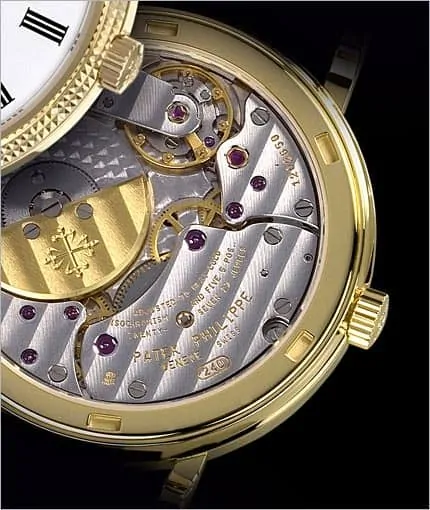
Lineage
Another major factor in price is based on the history of the brand behind the watch. While there are certainly some watch companies that charge a boatload of money for an inferior product (Panerai, IWC, Hublot, Movado), there are some companies such as Patek Philippe, Audemar Piguet and newcomer A. Lange & Sohne that have earned their reputations and deserve the ability to charging a significantly higher price for their product.
Just as art collectors would pay millions for a DaVinci or Picasso, watch enthusiasts will offer similar bids for grande complications by the industry’s most historic leaders.
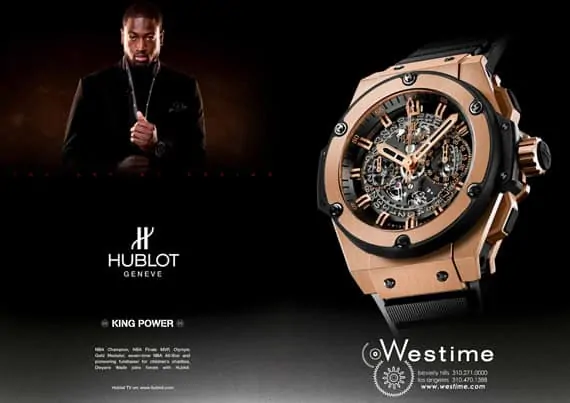
Conclusion
With expensive watches selling in the millions both at auction and in store, the luxury watch market has seen increases that no other industry has seen before. While there are a variety of factors that go in to pricing a watch, there is no greater factor that affects markup like “exclusivity” and “gimmick”.
While I would certainly pay the $1.3m for Patek’s Sky Moon Tourbillon, the vast majority of high priced watches really aren’t worth the money. If you’re considering purchasing a high priced timepiece, ensure you do your research to determine if the watch is really worth the hype. Every luxury watch company boasts an impressive lineage, but the fact is most are lying through their teeth. Unfortunately, like every other industry, marketing can make even a turd look like gold. Why else would a pill that turns your stool to gold actually fetch $400 a piece?
Do you research, read reviews and question everything the salesman says to you. After all, you may find that the $10,000 Panerai in the vault is actually inferior to that $500 boutique brand on the rack.
Get our watch guide here
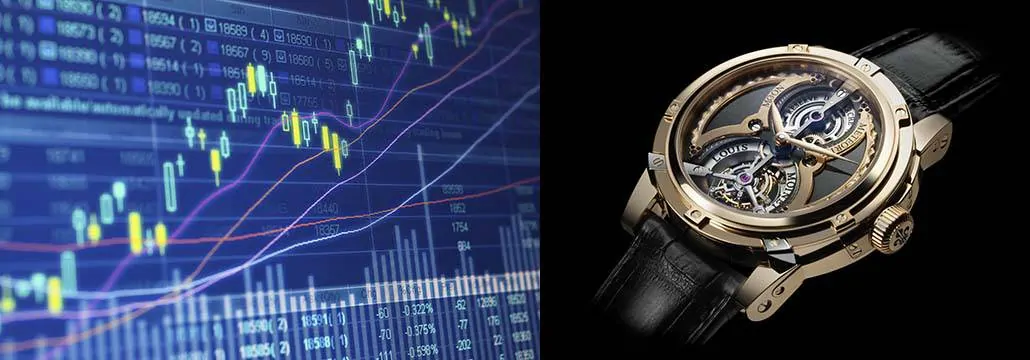
The most expensive watch I’ve purchased (so far) is a $400 LumiNox because I’m tired of not being able to tell the time at night. I prefer analog watches and traditional glow-in-the-dark watches just don’t last very long. Plus, the fact that they are endorsed by various Special Forces tells me (and I may be paying for marketing gimmicks) that it will last several decades.
To me, a timepiece is just that: to tell time. If it can’t do that adequately, then it’s a paperweight. While I appreciate nice wrist watches and, especially, pocket watches, they still have to be functional. I’ve never had anyone comment on my watches so I don’t consider them fashion statements.
I have owned and own a number of expensive watches and a couple of extremely expensive watches. Unfortunately for your watch aficionado audience I still maintain that my most reliable and accurate over time, most easily and reliably repaired or serviced and referring to Mr Jackson’s comment, most commented on (particularly from the ladies which is most important) are my Tag Heuer watches. I also simply prefer their styling over Omega and Rolex, except my Daytona maybe. Tag Heuer make a very handsome watch and I think watches are very much a statement of fashion, style and class. I have also found that on a second hand pricing average they have maintained closest to their original retail price. My Patek absolutely tanked on its retail price.
Having said all that I have noticed here in Australia that the price of watches has really gone up a lot recently. Even before the Australian dollar dropped its value. I wouldn’t like to have to buy the watches I own today and I do not plan to sell any more.
Interesting about the Patek, Kurt. So you would say you lost more money on the Rolex than on the Tag Heuer in absolute or relative terms?
Sven, firstly I am not a trader in any way. I am an average guy who enjoys some of the finer things and I like to work my way up. I also buy new, mostly because I like the leather and wood cases and all the paraphernalia. So to your audience, yes I could have bought cheaper / better. However, as an example and as approximates, Tag Heuer Carrera bought new RRP $3495 I paid $3195 traded up to dealer 18mth later $2700 he consequently sold it next day for $2950. Different deal and time, same dealer… Bought second hand Rolex Explorer 2 $5200, really didn’t like it 12 mths later. Spent more time at official Rolex repairer then on wrist. The best he could give me was $1900. Bought Patek new $37000. Dealer would not negotiate on RRP. Watch kept losing time particularly when I went home which is about 1300 ft asl. Repair said altitude can affect watch which is a crock… Wanted to sell it. The watch always felt a bit small and fragile on. I also fell completely in love with a rose gold Rolex Daytona. After hunting around and negotiating the best I could get and did finally trade after 3years was $13000. Story from all dealers across Australia and Europe was once you get above $10k there is no market for second hand watches at the moment and knowbody buys Patek because they can be unreliable and extremely high repair costs.
Anyway I now own 3 Tag Heuer watches which I wear all the time without one failure. My Daytona is beautiful but doesn’t go out much because every time I wear it there is a new mark in the gold. My Vacheron’s is fantastic as a dress watch.
I did try as an experiment go back to the watch dealer and try him on the other Tag’s. Pretty much offered same type of price ratio. His comment was that Tag make a very good, affordable watch which looks nice and appeals to a wide age and wealth demographic. Regards
Thanks for your detailed answer Kurt! It seems like buying used high end watches from a trusted source may be a better way to retain value, though I am sure there are some watches that increase in value over time…
I have a Jaeger LeCoultre Reverso and love it, but I don’t find I wear it a lot these days. I purchased a Nomos Orion Rose-face which has become my everyday go to “rare” time piece. Not many people have heard of Nomos, but it is a very fine company in Glashutte, Saxony, Germany. While I admire and perhaps even lust after a certain VC or IWC, I am very happy with the Nomos, and get a lot of satisfaction from owning it. It is funny, the Nomos gets a lot of attention from other watch aficionados, even some wearing watches costing ten times the price. Owning a fine mechanical watch (new or old) at any price is a wonderful thing to be appreciated along with the other elements of ones wardrobe.
I am well familiar with Nomos because I am from Germany and we are in the process of reviewing one for GG. They provide very good value!
Thanks for sharing your thoughts. In my opinion the Reversos are splendid watches and I would love to own one…
A very well focussed article. In fact – and as you know – I have a thing for vintage watches and in terms of quality and precision they are equally matched to present day watches at prices, hundreds of times more.
We’ll cover vintage watches in the near future!
A good article but, aside from the currency issue, there remains deeper issues that require addressing. Having looked at this I found that the average markup from manufacture cost is approx. 1000% so a £5,500 Rolex has a base cost of approx. £550. The other reason for this, alongside the rise in the Swiss currency increase (due to exchange flight from the Euro), is the policy of luxury goods brands (since the early 2000`s) of increasing prices by 10% p.a. (£1,000 becomes £2,590 across a decade) It is also worth noting that less than 5 companies now own 90% of Swiss brands whilst many have been using ETA mechanisms which are manufactured solely by Swatch (this is now changing as Victorinox`s new purpose built Swiss factory will attest to). Another point of interest is Rolex`s tax situation…listed as a charitable trust in Switzerland there is no apparent record of where their donations go. In short Swiss watches, especially the quartz models, can be incredibly poor value for money and the quartz models devalue horrifically (especially true for Swatch owned brands such as Longines and LMVH owned Tag). However brands such as Rolex, Patek etc. have enjoyed increases in second hand value due to being lifted by increases in new prices (as with any market). Furthermore increases in retail and secondary markets are being held by sales in East Asia which, by far, is now the biggest regional (vs. National) market – the biggest of these is Hong Kong (by proportion). Ironic, as some claim that a few Swiss brands are outsourcing parts manufacture to China (and assembling and finishing in Switzerland). Ultimately a $5 quartz watch will tell better time than any automatic.. it thus becomes a matter of aesthetics, taste and budget which, when the intrinsic value of precious materials are set aside, are shaped, for many, by the aspects and impressions of value and status via the industry’s massive advertising spend (F1, James Bond product placement etc.).
Fantastic Watches but ultra-expensive for ordinary folks! We can only admire from far!